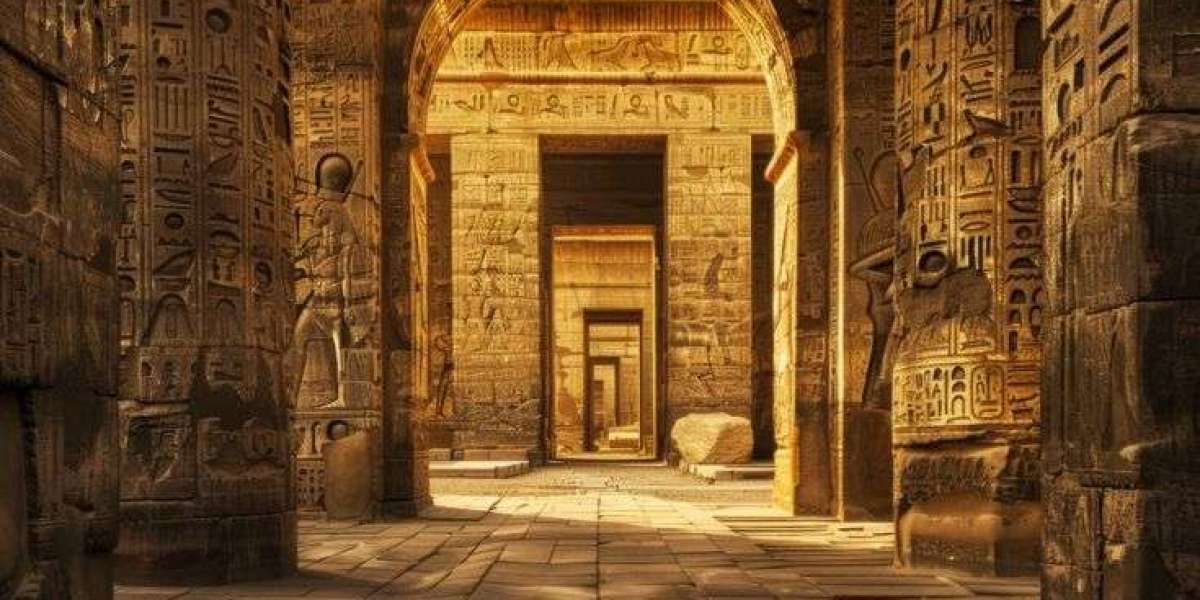Aswan, located in the southern part of Egypt along the Nile River, is known for its serene beauty, rich history, and unique cultural significance. As one of Egypt’s oldest cities, Aswan offers a harmonious blend of ancient monuments, vibrant Nubian culture, and stunning natural landscapes. Often considered the gateway to Nubia, Aswan has long served as a significant trading hub and a cultural meeting point between Egypt and Africa.
El Gouna The Red Sea’s Hidden Gem for Spa and Relaxation
Spa Services in Hurghada From Makadi Bay to Soma Bay and El Gouna
Exploring Ancient Egyptian Treasures
1. The Aswan High Dam: Egypt’s Engineering Marvel
One of the modern wonders of Aswan is the Aswan High Dam, an enormous structure built across the Nile in the 1960s. The dam controls the Nile’s annual flooding and provides hydroelectric power to much of Egypt. It also created Lake Nasser, one of the largest man-made lakes in the world.
- Significance: The dam's construction transformed Egypt's economy by boosting agriculture and energy production.
- Lake Nasser: This massive reservoir is home to diverse wildlife and provides fishing and boating opportunities for visitors. The creation of Lake Nasser also led to the relocation of several ancient monuments, including the famous Abu Simbel temples.
2. Abu Simbel: Monument to Ramses II
One of Egypt's most impressive archaeological sites is located south of Aswan, near the border with Sudan: Abu Simbel. This temple complex, built by Ramses II in the 13th century BCE, was carved into the mountainside and serves as a testament to the grandeur of ancient Egyptian architecture.
- Great Temple of Ramses II: The façade features four colossal statues of the pharaoh, each standing at over 20 meters high. Inside, the temple is filled with detailed carvings and statues depicting Ramses II’s military victories and his divine status.
- Temple of Hathor: Dedicated to Queen Nefertari, Ramses II’s wife, this smaller temple is also intricately carved and highlights the queen's significance in religious life.
The temples were relocated in a massive international effort in the 1960s to save them from the rising waters of Lake Nasser after the construction of the High Dam.
3. Philae Temple: Island of the Goddess
The Temple of Philae is one of the most beautiful and well-preserved ancient temples in Egypt. Originally located on the island of Philae, the temple was dedicated to the goddess Isis, one of the most important deities in ancient Egyptian religion. After the construction of the Aswan High Dam, the temple was relocated to the nearby Agilkia Island to prevent it from being submerged.
Architecture: The temple complex includes a series of sanctuaries and shrines, all built in the classic Ptolemaic style, with detailed carvings and inscriptions. Visitors can take a boat ride to the island, offering a scenic view of the temple as it appears to rise from the waters of the Nile.
Sound and Light Show: The temple hosts an evening sound and light show, which brings the history of the site and the goddess Isis to life, making it a popular attraction for tourists.
4. Nubian Culture and Villages
Aswan is the heart of Nubia, an ancient African civilization with a distinct culture and language. Nubian villages, located along the Nile and on the islands, offer visitors an opportunity to experience traditional Nubian hospitality, architecture, and customs.
- Nubian Museum: This museum in Aswan is dedicated to the history and culture of the Nubian people. It showcases artifacts from Nubia’s ancient past, including pottery, tools, and artwork, as well as exhibits detailing the impact of the Aswan High Dam on Nubian lands.
- Nubian Villages: A visit to a Nubian village offers a chance to see brightly colored houses, meet local artisans, and experience traditional Nubian cuisine and music. The people of these villages are known for their warmth and friendliness, making this a highlight for many travelers.
5. The Unfinished Obelisk: An Ancient Mystery
Aswan is home to a massive unfinished obelisk, which lies in a granite quarry near the city. If completed, this obelisk would have been the largest ever created, standing at over 40 meters tall and weighing around 1,200 tons.
- Historical Insight: The obelisk offers a unique insight into the techniques used by ancient Egyptians to carve and transport these massive monuments. Visitors can see the cracks that caused the obelisk’s abandonment and imagine the scale of labor required to construct such an object.
6. Elephantine Island: A Step Back in Time
Elephantine Island, located in the Nile near Aswan, was historically a significant trading hub between Egypt and Nubia. Today, the island is home to ruins from ancient Egyptian temples, including the Temple of Khnum, who was believed to control the waters of the Nile.
- Archaeological Ruins: The island features a variety of ancient sites, including Nilometers (structures used to measure the Nile's water level), temples, and fortifications.
- Nubian Villages: The island is also home to traditional Nubian villages, where visitors can experience local culture and customs.
7. The Aga Khan Mausoleum
Perched high on a hill overlooking the Nile is the Aga Khan Mausoleum, the final resting place of Aga Khan III, the leader of the Ismaili Muslim community. Built in a classical Islamic style, the mausoleum is an elegant structure with impressive views of the Nile and the surrounding desert.
- Significance: Aga Khan III was an important spiritual leader and philanthropist, and his mausoleum is a pilgrimage site for many Ismaili Muslims.
- Peaceful Surroundings: The serene location and beautiful views make it a peaceful spot to reflect and take in the beauty of Aswan.
8. Aswan Botanical Gardens: A Lush Oasis
Located on Kitchener's Island, the Aswan Botanical Gardens offer a lush escape from the desert heat. The gardens are filled with exotic plants, trees, and flowers from around the world, thanks to Lord Kitchener, who transformed the island into a botanical paradise in the late 19th century.
- Scenic Walks: Visitors can stroll through the gardens while enjoying the cool breeze off the Nile and admiring the variety of plant species.
- Boat Ride: The island is accessible by a felucca ride, providing a peaceful and picturesque journey along the Nile.
9. Aswan Souq: A Vibrant Market
Aswan’s Souq (market) is a bustling, colorful place where visitors can shop for traditional Egyptian and Nubian goods. From spices, perfumes, and jewelry to handmade crafts and textiles, the souq is a great place to pick up souvenirs and immerse yourself in the local culture.
- Nubian Handicrafts: The market is famous for its Nubian handicrafts, including pottery, woven baskets, and brightly colored clothing.
- Authentic Experience: Unlike the larger cities of Cairo or Luxor, Aswan's souq offers a more relaxed and authentic shopping experience, where haggling is part of the fun.
Conclusion: Aswan – A Blend of Nature, History, and Culture
Aswan offers a peaceful contrast to the bustling cities of Cairo and Luxor, with its relaxed atmosphere, friendly locals, and stunning landscapes. The city’s rich history, from ancient temples like Philae and Abu Simbel to the engineering marvel of the Aswan High Dam, makes it a must-visit for history lovers. Meanwhile, the unique Nubian culture adds a vibrant and colorful dimension to the experience, offering a deeper connection to Egypt’s African roots. Whether you're sailing along the Nile in a traditional felucca, exploring ancient ruins, or enjoying the natural beauty of the botanical gardens, Aswan is a jewel of Egypt that captivates all who visit








